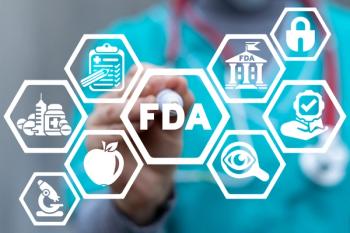
Alternative Strategies for Reducing Drug Costs: Q&A with Jesse Mendelsohn
In the face of potential tariffs, the pharmaceutical industry must find alternative ways to reduce costs.
The pharmaceutical industry is facing potential tariffs that will definitely impact prices. While the stated goals of the tariffs are to bring manufacturing back to the US, some experts argue that this is an unlikely result. Jesse Mendelsohn, VP at Model N, spoke with Pharmaceutical Executive about the likely impact the tariffs will have and alternative strategies to improve drug access and reduce costs.
Pharmaceutical Executive: What impacts will the tariffs likely have on medication pricing?
Jesse Mendelsohn: Consumers will feel tariff impacts less acutely at the pharmacy counter than at the car dealership or a retail store, at least in the short term. Medication costs are highly dependent on insurance coverage rather than market influences, so even though production costs and material prices may increase behind the scenes, patients won’t see much change right away.
Tariffs aren’t happening in a vacuum—they’ll set off a chain reaction with consequences we’re only beginning to understand. This trade policy is just one piece of a broader, interconnected regulatory landscape.
If rising manufacturing costs do lead to increased list prices, private insurers may face higher reimbursement expenses, which could in turn lead to increased premiums or out-of-pocket costs for consumers. Tariffs may be a major influence on the upcoming CMS Medicare drug price negotiations, the outcome of which will affect pricing in other markets.
Tariffs may also impact the availability of generics.The Association of Accessible Medicines says generic manufacturers can’t absorb new costs due to thin profit margins on the medications and may be forced to leave the market, potentially resulting in drug shortages in the U.S.
With so many moving pieces, we cannot predict the long-term ramifications of tariffs.
PE: How large would tariffs need to be for companies to move production to the United States?
Mendelsohn: There isn’t a specific threshold, but it would take significant, sustained tariffs combined with regulatory incentives to drastically shift global supply chains. The cost differential in drug manufacturing labor and materials between other countries and the U.S. is much greater than the cost of tariffs, especially if the rates continue to shift frequently. One year of tariffs is unlikely to offset long-term labor cost increases from employing U.S. workers.
Finished goods manufacturing, like packaging, might shift to the U.S. more easily than active pharmaceutical ingredient (API) production, but this transition would still require significant lead time to set up facilities, pass FDA inspections and staff operations. Personnel reductions at the FDA may delay the timeline for facility approvals, making near-shoring less lucrative.
While tariffs may influence long-term planning, most manufacturers will wait for more stability and clarity before making major moves. Even then, shifts in production will be slow, partial, and shaped by much more than just cost.
PE: What alternate strategies would have a better impact on reducing drug costs?
Mendelsohn: Pushing for lower out-of-pocket costs while making it more expensive to produce the drugs undercuts the effort from both sides.
Rather than penalizing foreign production with tariffs, incentivizing domestic manufacturing through tax credits, grants, and fast-track regulatory approvals could reduce reliance on foreign APIs while improving supply chain resilience.
Continuing structured Medicare negotiations under the Inflation Reduction Act (IRA) allows pharma companies to engage in a controlled, transparent process. These discussions target only a few drug prices in a defined timeline, while tariffs increase costs for every medication overnight. Negotiations allow pharma manufacturers to give input, plan for the pricing changes and phase in portfolio adjustments to maintain financial stability across unaffected products.
Another lever might include reforming the pharmacy benefit manager (PBM) model to increase transparency and remove complexity.
If the goal is to make medicines more affordable without compromising innovation or access, smart policy means collaboration—not cost escalation.
PE: How can companies strategize given the uncertain regulatory landscape in the US?
Mendelsohn: Companies must prepare for multiple scenarios because waiting for certainty isn't a viable strategy. Enhancing revenue management processes supports agility. For pharmaceutical manufacturers, that means investing in better data gathering, aggregation, and analysis to enable dynamic, optimized pricing strategies. AI-powered platforms can model different scenarios, such as varying tariff rates, supply chain adjustments, regulatory changes, and pricing strategies, empowering companies to anticipate impact and proactively create plans. Additionally, automated systems that support sophisticated rebate and contracting approaches will prevent unnecessary revenue leakage when every dollar matters.
Jesse Mendelsohn is a Senior Vice President at Model N, the leading revenue optimization and compliance provider for life sciences and high-tech manufacturers.
Newsletter
Lead with insight with the Pharmaceutical Executive newsletter, featuring strategic analysis, leadership trends, and market intelligence for biopharma decision-makers.





